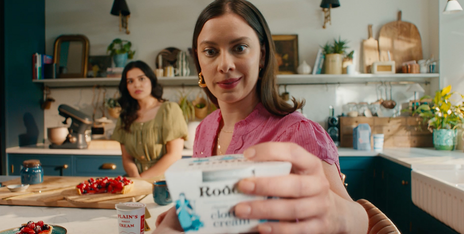The Vilification of Gen Z is Misleading Brands
Published on 3rd June 2024By Beth Evans, Strategist
It's a tale as old as time itself. One woven into our collective consciousness.
“We give them an uncertain world but blame them for trying to survive it. Why the vilification of Gen Z is misleading brands.”
It's a tale as old as time itself. One woven into our collective consciousness. How the youth of today is leading society astray. Mods and rockers and the dawn of acid-house are all examples of how we thrive from sensationalising unfamiliar trends adopted by the youth. Fast forward to 2024, be it the workplace, schools, or at home; despondency, laziness, and ‘snowflakes’ are labels often affixed onto the shoulders of Gen Z and Alpha. However, it’s an all too easy tale to tell. Often an effective distraction from engaging in far more valuable conversations necessary to appreciate the complex challenges facing young people.
Across the advertising industry too, our clients’ sheer determination to understand this puzzling ‘consumer of tomorrow’ – with questions like ‘How do we go after Gen Z?’ - means they fall at the first hurdle by blanketing a generation (from ages 12 to 27) shaped fundamentally by inequality, (hyper-) individualism & intersectionality.
In reality, these ‘Gen Z’ stereotypes and rhetoric of inter-generational conflict are deeply flawed. Misleading brands seeking to understand younger audiences and encouraging us to discredit useful insights such as the surge in multi-generational lifestyles, mothers stepping in as best friends and young adults celebrating quality time with ageing parents.
Instead, as consumer behaviour and trend experts, we must advise clients to adopt a lens of empathy to unpick the pain points of their future audiences. To reflect on the immense pressure and multiple roadblocks they continually find creative and innovative solutions to. Only then can we unearth a wealth of insights, including those explored below, that enable brands a powerful stake in their audience of tomorrow.
1. The savviest shoppers yet
Shopping addicts. Fast-fashion freaks. Rich-obsessed. New eras each week. We’re told Gen Z is out-of-control when it comes to spending. Yet a shortage of affordable alternatives offered by brands is surely more to blame here?
On crippling entry-level salaries, with no choice but to pay high rents during a time of intense inflation, stretching paycheques is a daily concern for Gen Zers. As a result, far from impulsive buying behaviour, their shopping decisions often show patience and display a great deal of consideration. They hyper-analyse and quickly compare products, switching between their phone, apps, websites and the physical store (yes, they do still frequent the shopping centres!) to repeat the same, again and again. All to figure out, ‘Is the fit right? Will they suit my other clothes? Can I find cheaper?'. Generally being highly intentional about their shopping purchases. My youngest sister is a prime example – visiting TikTok, brands’ social media channels and Vinted to check the fit of a single pair of jeans.
How brands show up on these channels, to serve and enhance the discovery of (dare I say it) a generation who are savvier and more sophisticated in their buying behaviour than any of their predecessors, will be key to securing the money they’re happy to spend.
2. R&R replaces recklessness
Perhaps the most puzzling behaviour of all is that this audience isn’t characterised by youthful recklessness. As parents now pressure their children to ‘have a drink with them’, they fail to understand that to survive in a climate of mental health and soaring costs, their children have actively chosen to rewrite the rulebook as they knew it. Today, wellness is Gen Z’s agreed religion and wholesomeness is a defining value of this generation. In has literally become the new out. With 18–24-year-olds more than twice as likely to swap drinking staycations for the outdoors, this is a generation replacing alcohol for ‘PowerPoint nights’ indoors and ‘bring a board’ evenings, while actively rejecting dating apps and bars with ‘date me docs’ and Strava alternatives. I would argue young people in 2024 are making more intentional life decisions than their predecessors ever did. How brands tap into these new and creative ways of release via social media and IRL communities will be key.
3. Beady eyes for inauthenticity
Aesthetic culture has been the cause of further unnecessary discourse with many mis-understanding Gen Z’s behaviour as pressure rather than play. Far from fixed, identity has become an act of experimentation – facilitated even more by the digital world. In Gen Z’s universe, there is no ‘right way’. The unaesthetic trend demonstrates this generation is unapologetically themselves and surprisingly confident in who they are, with a keen eye for spotting inauthenticity. For brands looking to mean something to these individuals, showing up with a Gen Z message that feels authentic in tone and voice of the existing brand is more crucial than ever.
As a collective industry, we must pivot our view of this audience to one finding sophisticated and creative solutions to their problems. From hyper-analysing every-purchase, seeking safety and warmth over recklessness or celebrating their whole selves, Gen Z are ripping up the ‘tried and tested’ rulebook as we know it. While this is causing many of us to distrust young people, if we look beyond the surface, this is a generation who have grown up in an increasingly uncertain world but is consistently blamed for trying to survive and thrive in it. The brands that recognise this irony, and instead seek out and immerse themselves in the unconventional environments and lifestyles of today's youth, will be in poll position to unlock their spending power.



